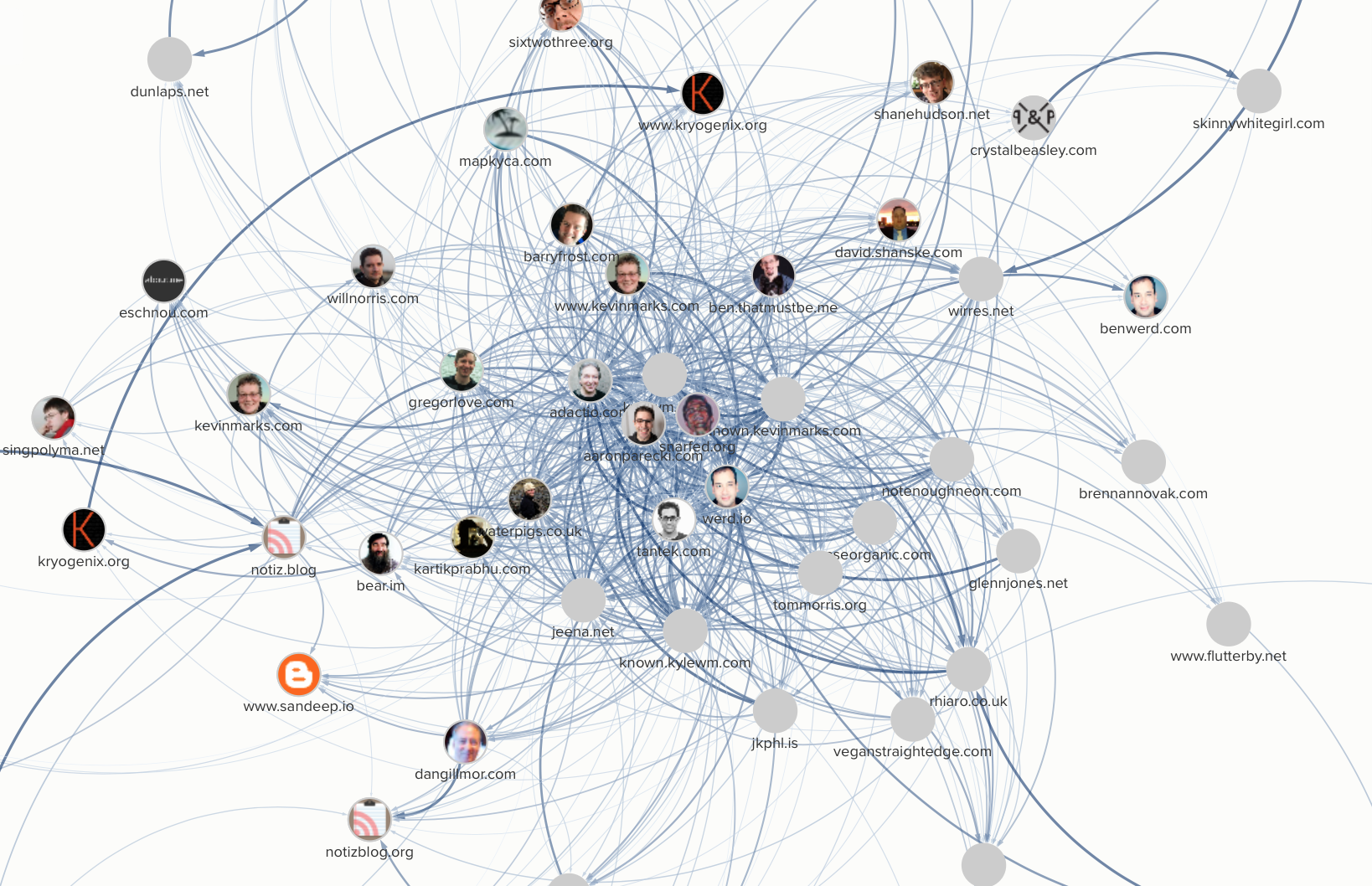“Most important things in life are a hassle. If life’s hassles disappeared, you’d want them back.” — Hayao Miyazaki
The blog AltPlatform had published a number of articles about the open web and indie blogging. Brian Hendrickson wrote about emerging protocols from the IndieWeb and Mastodon, and how these standards could eventually reach a scale that would "flip the iceberg" to become the more dominant way we communicate online:
Open source tools like WordPress, 1999.io and Mastodon.social are creating many small networks of publishers, and popular tools like Twitter and Micro.blog could peer with them. If all of the social networks outside of Facebook interoperated at some level, they might eventually “flip the iceberg” and become the dominant form of social networking.
Compatibility between new blog-focused platforms could eventually become bigger than any one social network. This compatibility comes from open standards. (I'll talk more about the IndieWeb and Mastodon in parts 3 and 5.)
It is daunting to create a new microblog platform — to compete with Twitter and Facebook, to go up against more established companies with better funding — and creating a new social network from scratch usually does not work. The huge platforms are super-aggregators, ad-based with little cost to acquire content or scale, and difficult to compete with network effects.
For years many developers have wanted an alternative but have not been able to get mainstream traction. Developers and entrepreneurs with the best intentions, great talent, and a larger team than we have for Micro.blog.
So to flip the iceberg, we must start with a simpler goal: encourage more people to blog. We must play the long game, building deliberately so that the foundation will last for years.
It's not about leaving Twitter and moving to the next platform. It's about redistributing microblog posts across the web, with a diverse set of platforms.
This redistribution is already happening. Indie Map took thousands of independent blogs and started mapping the relationships as people use their blog to link and reply across sites. Instead of a concentration of users on a single site like Twitter or Facebook, users are spread out, posting at sites they control.
Blogging at a personal domain name is a kind of investment in the future of the web. It's a statement that you value your own writing and are ready to contribute to making the web better.
This book is divided into 6 major parts:
- Part 1: Rewind takes us back to early social networks and blogging platforms. It also includes interview questions with Marco Arment about the early days of Tumblr, and a conversation with Leah Culver about Pownce.
- Part 2: Foundation outlines the basics of indie microblogging, with a quick-start guide for WordPress and how Micro.blog fits into the ecosystem of indie microblogs. There’s an overview of JSON Feed and an interview with NetNewsWire developer Brent Simmons.
- Part 3: IndieWeb is all about the IndieWeb movement. I’ll cover why we care about owning our content and the building block API standards of the IndieWeb. It’s capped off with an interview with IndieWeb co-founders Tantek Çelik and Aaron Parecki.
- Part 4: Hypertext covers the unique nature of web formats, focusing on photography, UI, and HTML.
- Part 5: Decentralization takes us to Mastodon, WebSub, and real-time notifications between blogs.
- Part 6: Community is about the intersection between blogs and platforms. The impact of harassment, misinformation, and politics on healthy communities. We end with a conversation with Micro.blog community manager Jean MacDonald.
Getting millions of new bloggers to post to their own site won't be easy. Nothing worthwhile ever is. It seems like a never-ending hassle to convince people to blog when Facebook onboards new users so effortlessly. But we've seen in the years since Micro.blog launched that this will work. There's no question that more people are blogging today because of Micro.blog and the larger IndieWeb movement, and we've only scratched the surface.
